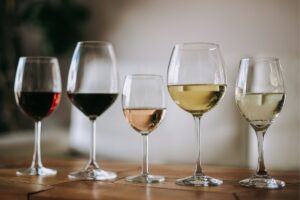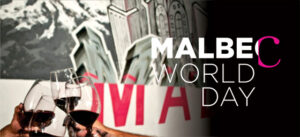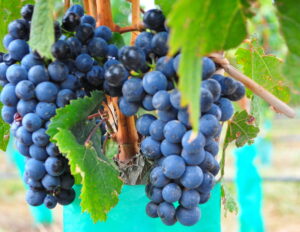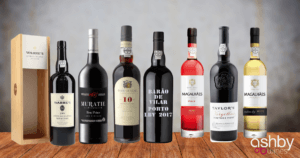If you’re a wine aficionado, you know that the right glass can make all the difference in how a wine tastes and smells. The shape of a wine glass has a direct impact on how the wine is perceived by your senses. In this informative blog post, we will delve into the various shapes of wine glasses, their intended purposes, and how they can elevate your wine drinking experience to new heights. Welcome to Wine Glass Selection 101!
Demystifying Wine Glass Anatomy: A Guide to Understanding the Basics
Before delving into the world of wine glass shapes, it’s important to grasp the fundamental anatomy of a wine glass. A typical wine glass is comprised of three essential parts: the bowl, stem, and base. The bowl is where the wine is poured, and its shape has a direct impact on the wine’s aroma, flavour, and mouthfeel. The stem is the part that you hold, preventing your hand from warming the wine, while the base provides stability to the glass. Familiarizing yourself with the role of each component is crucial in selecting the perfect wine glass for your desired wine, as the shape of the bowl can greatly influence how the wine is perceived by your senses. Let’s unlock the mysteries of wine glass anatomy!
The Types of Wine Glass
The Bordeaux Glass
For the discerning wine connoisseur, the right glass can make all the difference in savouring the full flavours and aromas of a fine red wine. The Bordeaux glass is specifically designed for bold, full-bodied reds like Cabernet Sauvignon, Merlot, and Bordeaux blends.
The tall bowl and broad base of the Bordeaux glass serve a purpose beyond aesthetics. They allow for increased oxygenation and evaporation of the wine, which in turn releases the wine’s full bouquet of aromas and flavours. The ample size of the glass also allows for gentle swirling without spillage, further enhancing the wine’s aromatics.
The broad base of the Bordeaux glass facilitates aeration, enabling the wine to develop greater complexity and balance over time. The large bowl is designed to capture the full range of the wine’s aromas, enriching the overall drinking experience.

The Burgundy Glass

The Burgundy glass is designed for lighter-bodied red wines, such as Pinot Noir.
Its wide bowl and narrow base provide the perfect surface area for the wine to release its delicate aromas. The wider bowl allows the wine to breathe, and the narrow base concentrates the wine’s bouquet, which enhances its overall complexity.
The Burgundy glass is shorter than the Bordeaux glass, which allows the wine to be closer to the nose, allowing the drinker to fully experience the wine’s aromas. The glass’s rounded shape also makes it easier to swirl the wine, which helps to release more of its flavors and aromas.
It’s important to note that using a Burgundy glass for full-bodied red wines like Cabernet Sauvignon may not be optimal, as the glass’s shape would not allow the wine to fully express its full-bodied nature.
The Champagne Flute
The Champagne flute is designed to enhance the drinking experience of sparkling wines and champagne.
Its tall, narrow bowl helps to preserve the bubbles in the wine, preventing them from escaping too quickly. The flute’s shape also allows the wine’s aroma to be concentrated at the top of the glass, allowing the drinker to fully appreciate the wine’s delicate bouquet.
The narrow opening of the glass also directs the wine to the front of the mouth, allowing the drinker to fully appreciate the wine’s flavours.
It’s important to note that while the Champagne flute is designed specifically for sparkling wines, it is not the ideal choice for all types of sparkling wines. Some fuller-bodied sparkling wines, such as Cava or Prosecco, may be better enjoyed in a wider bowl to fully express their unique flavours and aromas.

The White Wine Glass

The white wine glass is designed for lighter-bodied white wines such as Sauvignon Blanc, Pinot Grigio, and Chardonnay.
It has a smaller bowl than the red wine glasses, which helps to preserve the wine’s delicate aroma and prevent it from being overwhelmed by oxygen. The shape of the glass also directs the wine to the tip of the tongue, allowing the drinker to fully appreciate the wine’s subtle flavours.
The white wine glass is also ideal for serving chilled wines, as its smaller bowl size allows the wine to maintain its temperature for a longer period.
It’s important to note that the white wine glass is not ideal for full-bodied white wines, such as oaked Chardonnay, as its smaller bowl size would not allow the wine to fully express its flavours and aromas.
The Dessert Wine Glass
The dessert wine glass, also known as a port glass, is designed for serving sweet, fortified wines such as port, sherry, and Madeira.
It has a smaller bowl size than the red wine glasses, which helps to concentrate the wine’s aromas and flavours. The glass’s tapered shape helps to direct the wine to the front of the mouth, allowing the drinker to fully appreciate the wine’s sweetness.
The dessert wine glass is also ideal for serving fortified wines at room temperature, as its smaller bowl size allows the wine to maintain its temperature for a longer period.
It’s important to note that the dessert wine glass is not ideal for serving other types of wine, as its shape is specifically designed for concentrated, sweet wines.

In Summary
Choosing the right wine glass can have a significant impact on the overall drinking experience. Different types of wine glasses are designed to enhance the unique characteristics of different types of wines. Using the “wrong” glass can result in a less-than-optimal drinking experience, where the wine’s full potential is not realized.
The shape of the glass can significantly impact the wine’s aroma, flavor, and overall drinking experience. The bowl’s size and shape determine how much oxygen comes into contact with the wine, which can affect its aroma and flavor. A narrower opening can direct the wine to a specific area of the mouth, allowing the drinker to fully appreciate the wine’s unique characteristics. A broader base can allow for more oxygenation, which can help to release the wine’s full aroma and flavor.
Investing in a set of quality wine glasses can make a significant difference in how wines are experienced. A high-quality wine glass is made with lead-free crystal or glass, which can enhance the drinking experience by providing a clear view of the wine’s colour, clarity and body.
Most importantly – enjoy your wine! Cheers!









